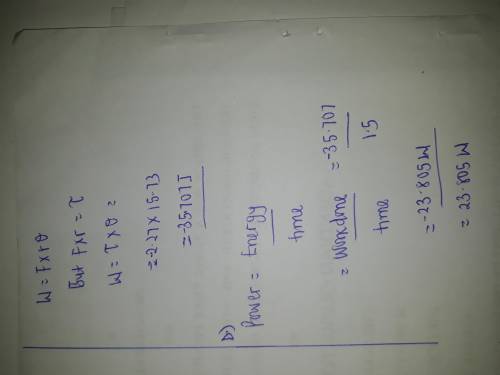
Physics, 13.03.2020 02:21 Halieyrobinson3003
The angular momentum of a flywheel having a rotational inertia of 0.200 kg·m2 about its central axis decreases from 3.80 to 0.400 kg·m2/s in 1.50 s. (a) What is the magnitude of the average torque acting on the flywheel about its central axis during this period? N·m (b) Assuming a uniform angular acceleration, through what angle does the flywheel turn? rad (c) How much work is done on the wheel? J (d) What is the average power of the flywheel? W

Answers: 3


Another question on Physics

Physics, 22.06.2019 05:30
Because light travels in a straight line and casts a shadow, isaac newton hypothesized that light is
Answers: 1

Physics, 22.06.2019 10:00
Which atomic model was proposed as a result of j. j. thomson’s work?
Answers: 1

Physics, 22.06.2019 10:30
Light from a sodium lamp passes through a diffraction grating that has 1000 slits per millimeter. the interference pattern is viewed on a screen 1.000 m behind the grating. the first (m = 1) two bright yellow fringes that are visible are 0.7288 m and 0.7300 m from the central maximum. what are the wavelengths of these two fringes?
Answers: 2

You know the right answer?
The angular momentum of a flywheel having a rotational inertia of 0.200 kg·m2 about its central axis...
Questions

Mathematics, 08.10.2019 06:00

Chemistry, 08.10.2019 06:00


Mathematics, 08.10.2019 06:00

Physics, 08.10.2019 06:00


Arts, 08.10.2019 06:00



English, 08.10.2019 06:00


History, 08.10.2019 06:00

Mathematics, 08.10.2019 06:00

English, 08.10.2019 06:00




Biology, 08.10.2019 06:00

Mathematics, 08.10.2019 06:00





